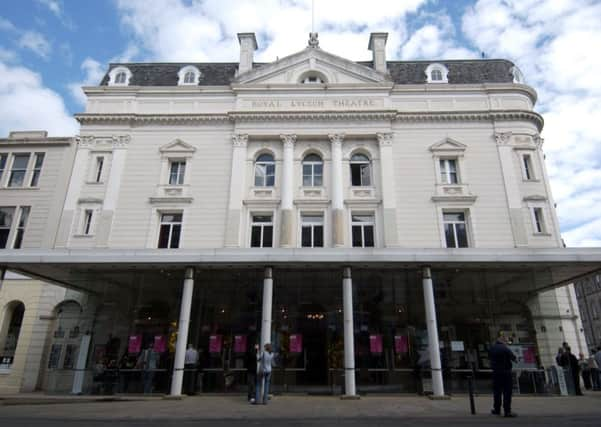Joyce McMillan: Cuts will hit Lyceum hard


The Lyceum is a perfect Victorian gem, in the heart of one of Britain’s wealthiest cities; and its current programme of seven new mainstage productions a year reflects a powerful mix of classics and new work, with Friel, Brecht, Ibsen and Goldoni on stage this spring, after a 2014 season which featured three brand-new plays, including Tim Barrow’s controversial Union, and David Haig’s acclaimed wartime drama Pressure. What’s more, 2015 marks the 50th anniversary of the Lyceum’s producing company, under the great actor-director Tom Fleming.
There is, though, a huge cloud on the Lyceum’s horizon; because in its October 2014 funding round, Creative Scotland announced that the Royal Lyceum would receive a swingeing cut of 17 per cent to its regular core grant – by far the biggest cut of any theatre organisation in Scotland. This involves an annual loss to the theatre of just over £210,000; and although it represents only 6.5 per cent of its turnover of around £3.3 million, it has serious implications, as the theatre’s executive director Alex McGowen explains.
Advertisement
Hide Ad“By the time this funding announcement was made – and it was completely unexpected – we were already so well advanced with our planning for the 50th anniversary season that we had to ask Creative Scotland to give us standstill funding for 2015-2016, and then to load all of that £630,000 cut onto the remaining two years. So in those years, we’ll be losing almost 10 per cent of our total income; and that is hard to manage simply because the fixed costs of running the Lyceum are so high. Our aim is to run a major theatre production organisation, which has full workshop facilities, and a world-class stage management team; we have a staff of around 50, and and we strive to pay people a proper living wage, as a major rep theatre should.
“So unless you want to lose a vital part of that production capability, those costs don’t change, no matter how many or few shows you do. And if you set aside the three quarters of our annual budget which is spent directly on shows, then more than half of the remaining 25 per cent goes on unavoidable costs associated with the maintenance of this beautiful historic building, and our other premises; we not only pay rent to Edinburgh City Council for the building, but have a full repairing lease.” The current pressures on local authority finance also mean there is little chance of Edinburgh City Council – whose culture department currently chips in around £370,000 a year – making additional grants to the Lyceum; and although the theatre has increased its sponsorship income seven-fold in recent years, to a decent £210,000 a year, it remains true that in Edinburgh, wealthy donors often prefer to support the city’s prestigious international festivals.
“In the end,” says McGowen, “there are decisions looming about whether we want to continue to produce our own top-flight professional theatre in this city, or whether we are willing to allow that rich phase of Scottish theatre to fade into the past. In the great scheme of public finance, these sums are not huge. Yet as things stand now, the Lyceum in three years’ time just won’t be the same as it is today. We have to decide whether that’s a loss we’re prepared to take; or whether we want to protect and develop everything that’s been built up here, over the last 50 years.”